The 1960s
The push to heat with electricity
Following a study in the late 1950s, PP&L decided in late 1959 to aggressively promote electric heating for homes. In 1961, when PP&L began its concerted effort to sell electric heat, there were only about 1,000 PP&L customers using electric home heating. By 1964, that number had increased six-fold and it doubled to nearly 14,000 electric home heating customers by early 1967.
1961
New plant boosts generation
The Brunner Island station, PP&L’s second semi-outdoor, bituminous coal-burning plant, goes on line. The initial two units are the largest yet in the company’s system, adding the capability to generate 741 MW of power. A third unit is built before the end of the decade.
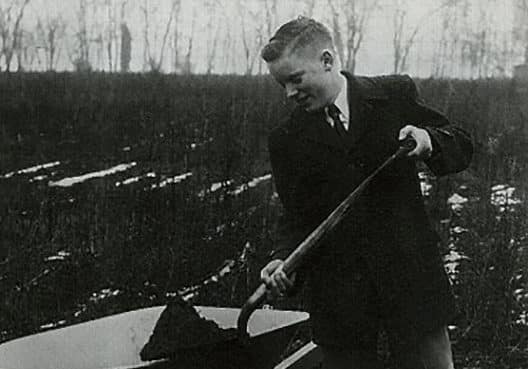
At the 1958 groundbreaking, with an eye on the future, PP&L chose a 13-year-old shareowner to put in the first shovel. “He represents our customers of tomorrow…,” PPL Chairman Chas. E Oakes said at the groundbreaking. “For at this moment, we already look ahead to the need for power plant capacity that by 1970 will be double what we now have.”
1962
Power fuel shift
From 1962 to 1984, annual year-to-year production of anthracite coal increased only twice. Declines were registered in each of the other 20 years. In the 1960s, PP&L shifted to Pennsylvania bituminous coal to reduce its dependence on the declining production of the state’s anthracite fields. The company also began using a unit train system that delivered coal in a dedicated trainload from the mine to the power plant.
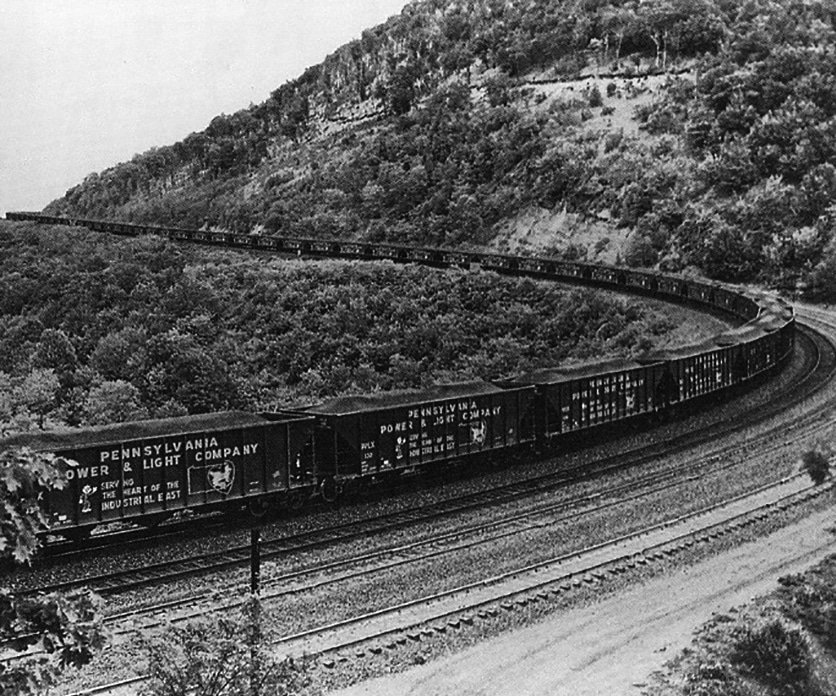
Coal trains transported coal from mines to power plants as part of a cooperative effort between the Pennsylvania Railroad and PP&L. This photo was taken around 1964.
1967
Electric vehicles added to PP&L’s fleet
PP&L adds eight electric vehicles to its business car fleet and begins touting the benefits of electric vehicle use. The electric vehicles, called Mars II, could reach speeds of 60 miles per hour for a range of 70 to 120 miles before needing to be recharged. PP&L invited the media to see the cars and peek under the cars’ hoods during a press event that summer.
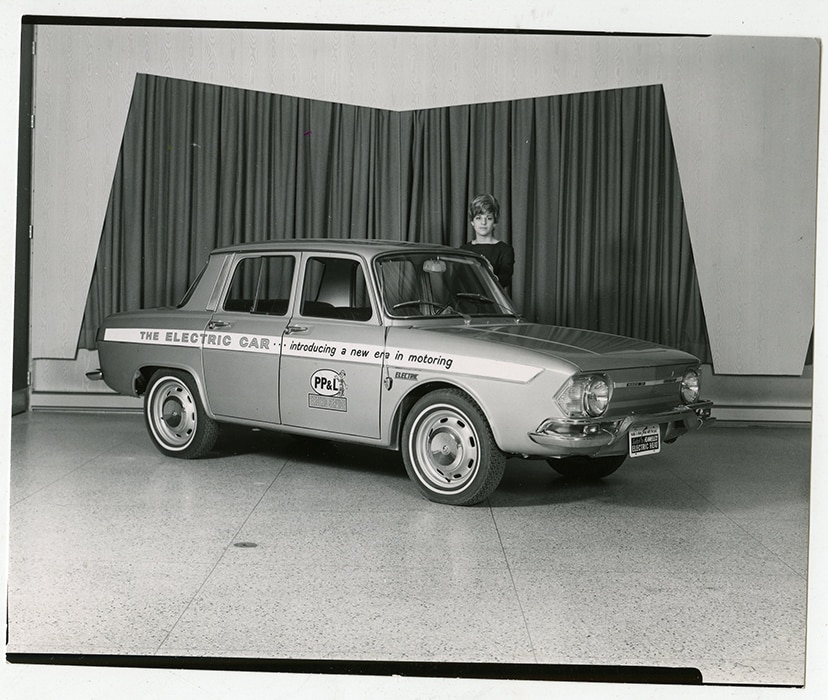
The 1960s
The push to heat with electricity
Following a study in the late 1950s, PP&L decided in late 1959 to aggressively promote electric heating for homes. In 1961, when PP&L began its concerted effort to sell electric heat, there were only about 1,000 PP&L customers using electric home heating. By 1964, that number had increased six-fold and it doubled to nearly 14,000 electric home heating customers by early 1967.
New construction in the PP&L territory was increasingly being built with electric heat at this time. By 1967, the number of new dwellings built with electric heat had more than quadrupled, to 38 percent.
“The most comfortable winter”
In the ‘50s, PP&L customers clamored for newfound appliances, such as the dishwasher and the television, but by the ‘60s the focus was on electric heat.
PP&L devoted time and resources to educating customers about the benefits of electric heating. Touted under the slogan, “flameless electric heating,” the company explained that electric heat offered “draft-free comfort, clean as electric light, minimum attention needed and maximum flexibility.” Brochures, ads and billboards encouraged customers to adopt this new heat source.
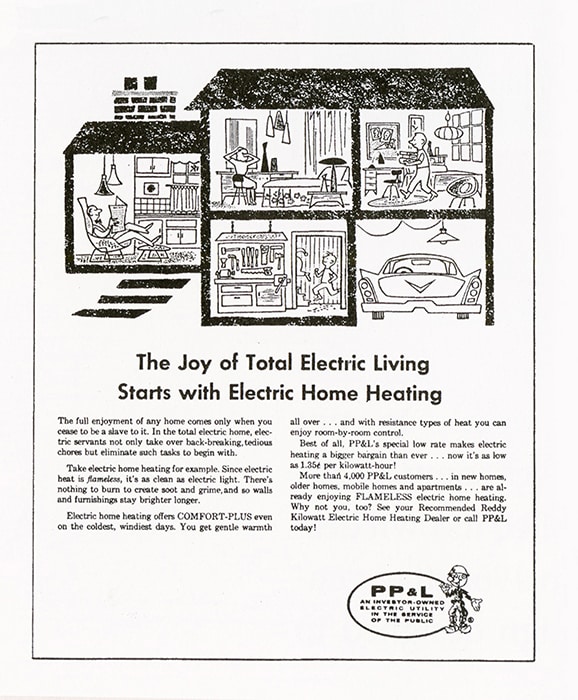
Consumers marveled that an electric heating system – offered through ceiling cables, wall units or baseboard heaters – could provide separate temperatures in each room. PP&L customers enjoyed the new level of comfort. C.L. Mentzer, of Valley View, Pennsylvania, wrote to the company in 1961 to say, “It was the most comfortable winter we’ve ever had – absolutely.”
PP&L also marketed electric heat for commercial uses. In 1963, Edison Electric Institute announced its All-Electric Building Award to recognize modern industrial and commercial buildings. Within a year of PP&L adopting the marketing incentive, the company bestowed placards on 12 buildings. When Allentown’s City Hall debuted in 1964, it touted electric heat. So did Woolworth’s in Shenandoah, Tabernacle Baptist Church in Williamsport, along with many others.
The company encouraged electric heating for new construction. While only nine percent of new homes in the company’s territory were built with electric heat in 1962, that number jumped to 38 percent five years later.
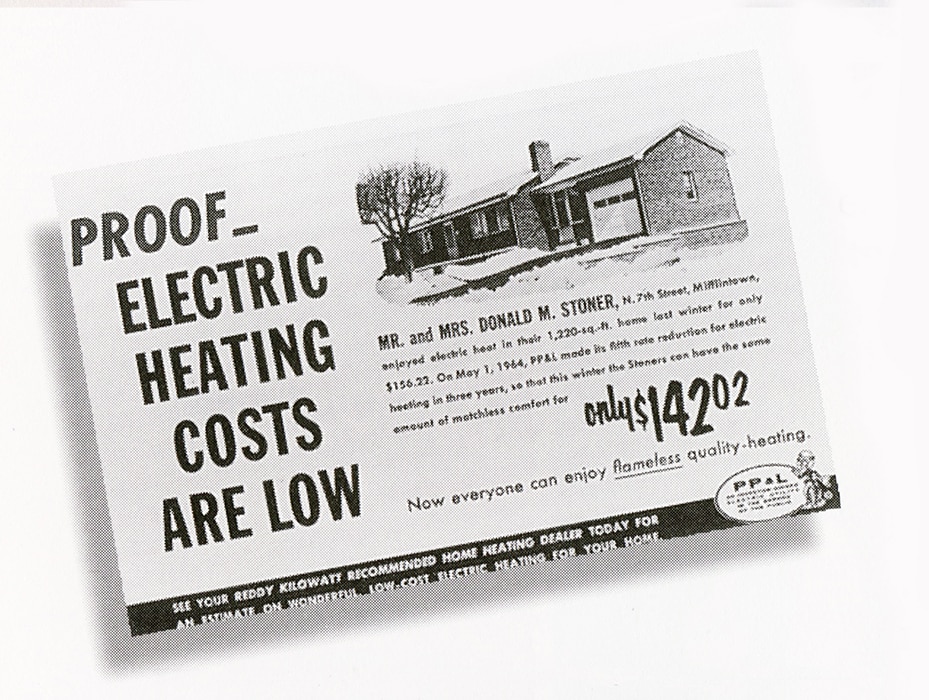
Carl Mozeleski, who retired from PP&L after 43 years, remembers the push in the ‘60s for electric appliances and heat. When he started in 1961, he remembers the company’s employees including home economists, appliance repairmen, reps for electric heating, and commercial, farm and industrial reps.
Mozeleski says the marketing department would work with contractors to sell electric heat. “They would prepare heating estimates versus other methods of heating and make recommendations on electric heating types,” he says.